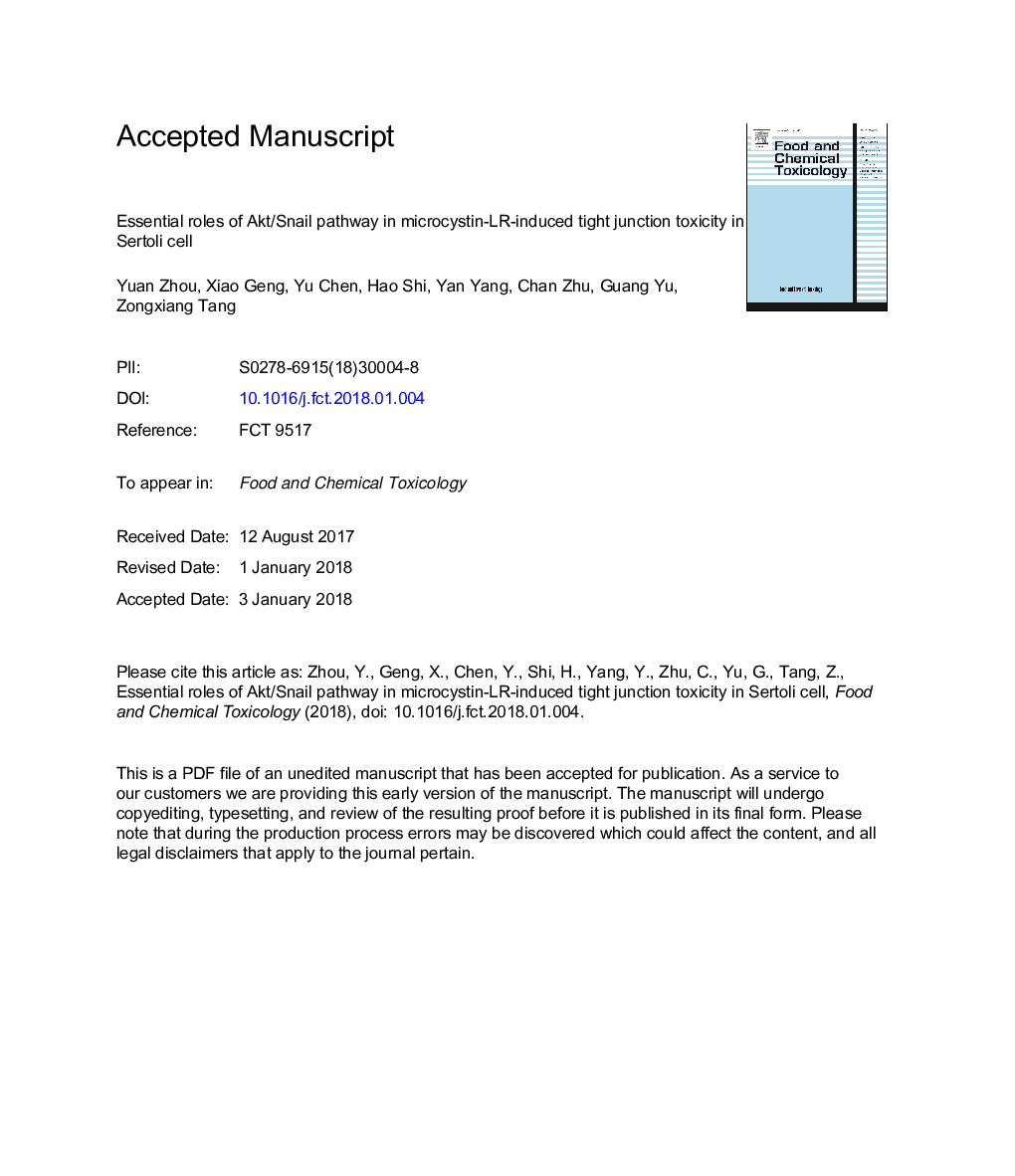| کد مقاله | کد نشریه | سال انتشار | مقاله انگلیسی | نسخه تمام متن |
|---|---|---|---|---|
| 8548345 | 1561735 | 2018 | 37 صفحه PDF | دانلود رایگان |
عنوان انگلیسی مقاله ISI
Essential roles of Akt/Snail pathway in microcystin-LR-induced tight junction toxicity in Sertoli cell
دانلود مقاله + سفارش ترجمه
دانلود مقاله ISI انگلیسی
رایگان برای ایرانیان
کلمات کلیدی
موضوعات مرتبط
علوم زیستی و بیوفناوری
علوم کشاورزی و بیولوژیک
دانش تغذیه
پیش نمایش صفحه اول مقاله

چکیده انگلیسی
Microcystin (MC)-LR is a cyclic heptapeptide that acts as a potent reproductive system toxin. However, the underlying pathways of MCLR-induced reproductive system toxicity have not been well elucidated. The blood-testis barrier is mainly constituted by tight junctions (TJs) between adjacent Sertoli cells in the seminiferous epithelium near the basement membrane. The present study was designed to investigate changes in TJs and the underlying pathway in MC-LR-induced TJs toxicity in Sertoli cell. In our study, the transepithelial electrical resistance (TER) value was decreased in a dose dependent manner due to the markers of TJs occludin, claudin and zonula occludens-1 (ZO-1) expression decline. MC-LR is shown to induce cytotoxicity by inhibiting protein phosphatase 2A (PP2A) activity. Our results also showed that the PP2A activity presented a dose-dependent decline. Moreover, MC-LR stimulated protein expression of snail by Akt/GSK-3β activation. The activated Akt/GSK-3β and snail signaling pathway largely accounted for MC-LRinduced TJs toxicity, which could be partially reversed by snail siRNA interference or AKT chemical inhibitor in TM4 cells. These findings indicated that MC-LR inhibit the protein expression of TJs, and the activation of Akt/Snail signaling pathways due to PP2A inhibition is proposed to participate in this process.
ناشر
Database: Elsevier - ScienceDirect (ساینس دایرکت)
Journal: Food and Chemical Toxicology - Volume 112, February 2018, Pages 290-298
Journal: Food and Chemical Toxicology - Volume 112, February 2018, Pages 290-298
نویسندگان
Yuan Zhou, Xiao Geng, Yu Chen, Hao Shi, Yan Yang, Chan Zhu, Guang Yu, Zongxiang Tang,